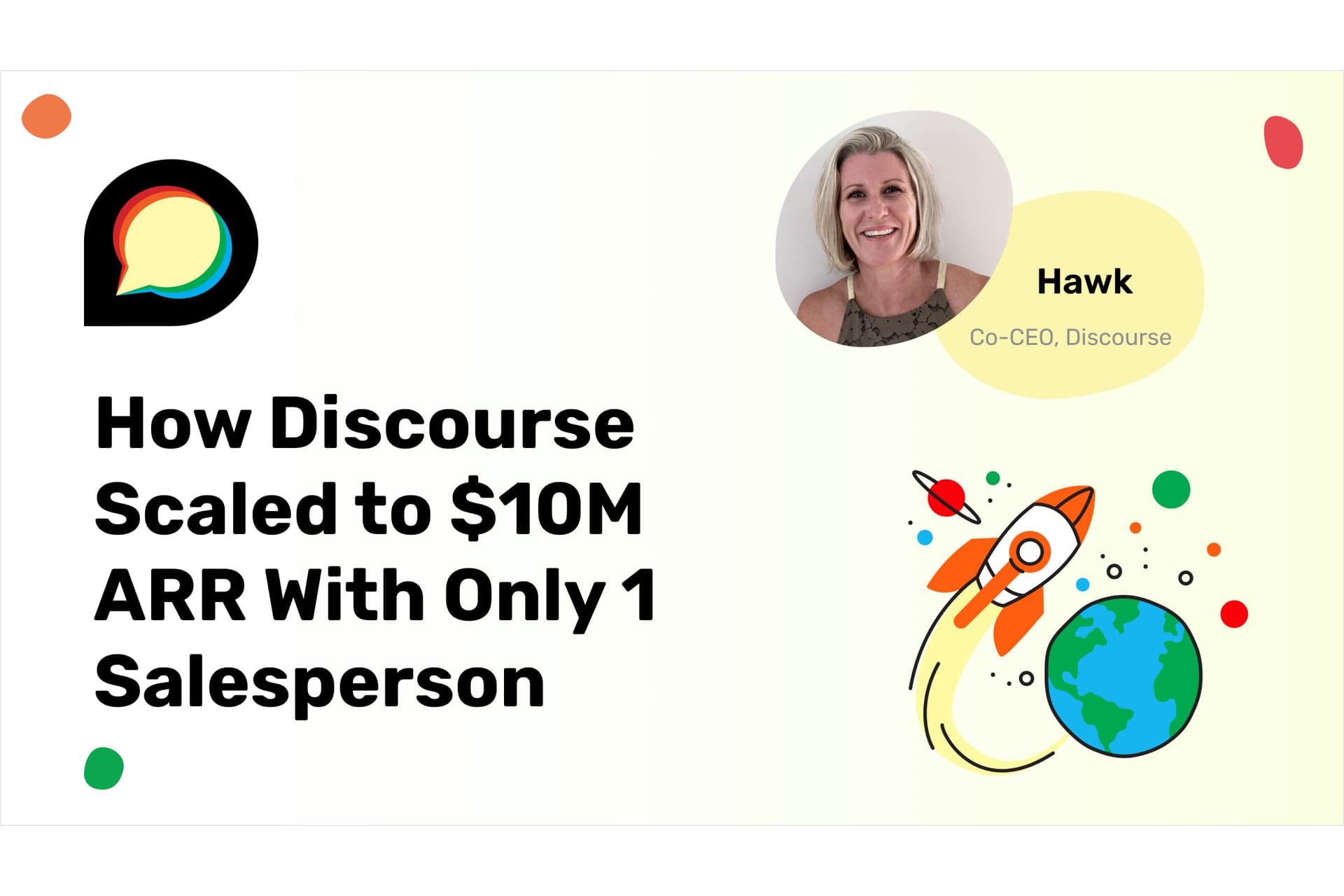How Discourse Scaled to $10M ARR With Only 1 Salesperson

It all began in 2013 with a vision – and a small team of engineers building a product that would disrupt the rapidly stagnating online forum space. While we didn’t specifically call it out at the time, we were going to market with a product-led sales strategy that we nurtured to a point where it became a fully blown growth strategy which sustained us for the next decade.
Product-led growth is now a well-recognised approach, but the term wasn’t widely used when we were starting out. We were laser-focused on developing an open-source product that people would love and we encouraged adoption everywhere, not just on our paid hosting.
I was hired in 2017 and became our first ‘accidental salesperson’ because sales was not specifically what I was hired to do. I was a subject matter expert primarily tasked with helping to inform the product. At that time, all sales were inbound on low-cost self-serve plans, which began with a free 14-day trial that could be easily extended. That was a key factor in our success – the trials allow potential customers to explore the value proposition prior to making a purchasing decision, but require very little involvement from our team. Allowing customers to uncover value for themselves without the need for sales intervention also plays a role in supporting retention because product fit is well-founded, not forced.
Another key success factor is strictly enforcing usage limits and functionality on self-serve plans to constrain the resulting support and maintenance load. Custom or additional functionality is limited to Enterprise.
Offering world-class customer support during the pre- and post-purchase stages is another fundamental part of our retention strategy. We put great emphasis on maximising the uptake on self-serve plans and only intervene with a sales approach at the Enterprise level.
At this point in our journey, we hit $10M ARR with half of that coming directly from the lower-cost self-serve segments.
Aligning the majority of business resources around providing the best product experience possible meant that we didn’t invest in marketing or sales during the first 5 years of our existence. This meant that we were able to scale more efficiently while continuing to invest in our product.
As we started to gain traction in the Enterprise space, my role transitioned into that of an inbound salesperson and deal negotiator. It was an obvious fit because I had deep product knowledge as well as domain expertise. Our sales process is product-centric and consultative – prospects have already become qualified leads as a result of the trial period – so working with them to build on existing functionality to customise the experience was an easy and natural upsell. My background as a subject matter expert with no prior sales experience meant that discussions were more authentic and benefits based.
Early key tactics
- No outbound sales of any kind – free trials meant that all customers had road tested our product and knew that it was a good fit prior to starting a subscription.
- No sales calls or product demos for customers that weren’t considering an Enterprise plan.
- No RFIs or RFPs which are arduous and time-consuming and frequently don’t come from qualified leads.
From inception, CDCK was a fully distributed, remote-first company which allowed us to keep our overheads low while we scaled our business. Growth was organic but disciplined and highly constrained. In 2021 we raised Series A capital with a growth plan in mind, and the team had grown to 65 people when we made our first official sales hire in March 2022, with marketing hires to follow.
Bootstrapping made us very careful about what we spent and given the circumstances of limited resources we were forced to focus and prioritise features that provide the greatest additional value to our users.
Why forced focus helped us to scale
- Lower, more sustainable customer acquisition cost (CAC), and hence…
- Less cash burn during the critical early growth phase while we were still figuring out product-market fit.
The result is a high-quality pool of customers who:
- have better retention/lower churn → higher lifetime value
- are more likely to recommend us (more low CAC customers)
- are more willing to share feedback, contribute to shaping our product roadmap, and participate in our public community
We are now a team of more than 80 and growing. We are making great inroads into the Enterprise market segment and continue to prioritise keeping a very tight feedback loop between customer success, support, and marketing. This allows us to keep our product relevant in a fast-moving market while maintaining our focus on customer support and retention.